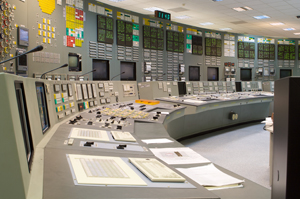Industrial management: Avoiding alarms

Operators managing a complex industrial plant can greatly benefit from models that predict when problems may arise. © Georgijus Pavlovas/iStock/Thinkstock
A*STAR researchers have developed an anticipatory alarm system based on dynamic models of industrial processes using concepts similar to extreme weather forecasting.
A large industrial plant such as an oil refinery contains many interdependent units. In such a complex system, many things could potentially go wrong, which explains why engineers need sophisticated alarms to help them deal with abnormal situations. Having too many alarms, however, is almost as problematic as having none — especially if all of the alarms go off at the same time.
Arief Adhitya and co-workers at the A*STAR Institute of Chemical and Engineering Sciences in Singapore and the National University of Singapore have developed a system that provides accurate short-term predictions of the state of the machinery in a plant, thus enabling operators to take action before alarms are triggered [1].
“With so many interacting units, a fault can trigger a domino effect, setting off a large number of alarms within a short time, known as an alarm flood. This can confuse and overwhelm an operator, who might then activate the emergency shutdown, which leads to a costly loss of production,” says Adhitya. “Recent studies reveal that operators who are able to predict the evolution of the state of the plant are best able to cope with alarm floods.”
Industrial alarm systems monitor large numbers of process variables — such as the temperature or pressure in boilers — and activate alarms if those variables go outside defined ‘safe’ ranges. Previous methods of dealing with alarm floods have included dynamic adjustments of alarm limits and screening of alarms to remove false or duplicate alarms.
Adhitya and co-workers went further. They combined detailed models of the industrial processes with historical data relating to machine behavior to estimate the rates of change of process variables. With this additional information, operators can assess when each variable is likely to trigger its alarm and can take evasive action.
The researchers tested their system with a case study of a depropanizer plant, which separates hydrocarbons of different sizes in an oil refinery. They simulated several faults, including loss of cooling water and fouling of the condenser, and found that their system predicted all the alarms successfully.
More importantly, the added information provided by their system reduced the diagnosis time for operators by around 35 seconds. The team is hopeful that their system could improve the efficiency of many different processes within and outside the oil industry.
Reference
1. Xu, S., Adhitya, A. & Srinivasan, R. Hybrid model-based framework for alarm anticipation. Industrial & Engineering Chemistry Research 53, 5182–5193 (2014).
Media Contact
All latest news from the category: Information Technology
Here you can find a summary of innovations in the fields of information and data processing and up-to-date developments on IT equipment and hardware.
This area covers topics such as IT services, IT architectures, IT management and telecommunications.
Newest articles

Silicon Carbide Innovation Alliance to drive industrial-scale semiconductor work
Known for its ability to withstand extreme environments and high voltages, silicon carbide (SiC) is a semiconducting material made up of silicon and carbon atoms arranged into crystals that is…

New SPECT/CT technique shows impressive biomarker identification
…offers increased access for prostate cancer patients. A novel SPECT/CT acquisition method can accurately detect radiopharmaceutical biodistribution in a convenient manner for prostate cancer patients, opening the door for more…

How 3D printers can give robots a soft touch
Soft skin coverings and touch sensors have emerged as a promising feature for robots that are both safer and more intuitive for human interaction, but they are expensive and difficult…





















